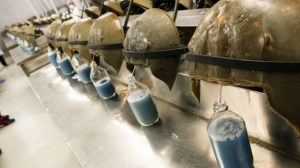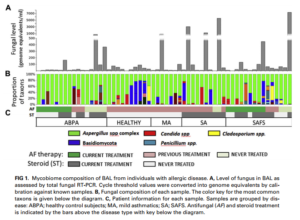Submitted by Aspergillus Administrator on 1 December 2009
Azole antifungals (itraconazole, voriconazole, posaconazole) are depended on in medical clinics to treat fungal infections. They are effective but the nature of the infection often means that the patients has to take the medication for long periods of time. Improvement is usually achieved but after a while progress can slow and it is often found that a strain of the fungus has grown out which is resistant to that antifungal drug.
Fungi can develop resistance to antifungal drugs naturally over time but it is a rare event and once it happens there is no know mechanism for the fungus to transfer the resistance genes to other fungi – something that is common in bacteria. This limits the frequency of resistance arising anew in fungi.
Where does the resistance come from? For resistant strains to multiply the fungus must come into contact with antifungals and thus encourage resistant strains grow out. Apart from in a patient undergoing antifungal treatment where does that happen? A recent paper (Science 326:1173 (2009)) strongly suggests that one place that this happens is when crops are treated with antifungal azoles in order to prevent fungal spoilage. Antifungal azoles are known to be used on a very large scale on orchards, vineyards and some grain crops in europe so this would be a good place for resistance to emerge.
News archives
-
Title
Date









